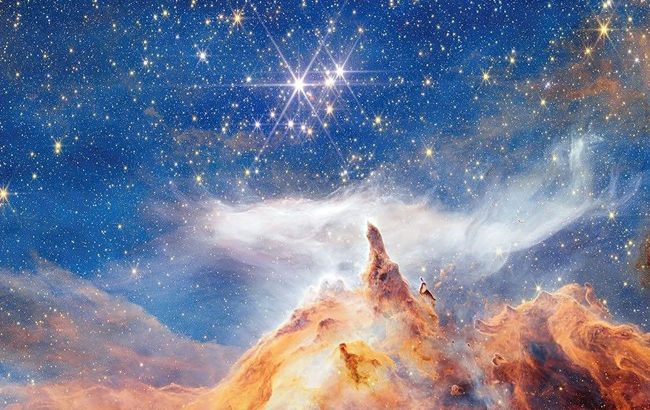James Webb telescope captures birth of giant stars in space
 James Webb telescope peers into the universe’s stellar nursery (photo: NASA.gov)
James Webb telescope peers into the universe’s stellar nursery (photo: NASA.gov)
The James Webb Space Telescope (JWST) has captured an image of part of the nebula NGC 6357, known as the Lobster Nebula, in the constellation of Scorpius. This cloud structure of molecular hydrogen is a huge "stellar nursery," where new massive stars are being formed, according to Space.com.
Giant peaks of molecular gas
The image shows the inner edge of the nebula’s cavity, adorned with jagged peaks of gas. The largest of them stretches 5.4 light-years, with its tip measuring 0.14 light-years—200 times the distance from the Sun to Neptune.
At the center of the nebula lies the Pismis 24 cluster, home to some of the most massive and hottest stars. It was once thought that the star Pismis 24-1 was the heaviest known, with a mass of 300 Suns, but later it turned out to be a triple system. One of the stars weighs 66 solar masses, while the other two are spectroscopic binaries of 36 solar masses each.

The image shows a triple star system (photo: NASA)
New stars are born in the peaks
The gas in the peaks is dense and resists ultraviolet radiation, but gradually collapses under gravity, forming new stars. In the future, these stars will destroy the peaks from within and emerge in the Milky Way.
The image reveals thousands of stars: hundreds belong to the Pismis 24 cluster, while the rest lie in the background of the nebula. All objects are shown in false colors to visualize JWST’s infrared data:
-
Cyan – hot ionized gas
-
Orange – dust particles
-
Red – cold, dense molecular hydrogen gas
-
Black – the densest regions
A white mist that seems to evaporate from the jagged peaks creates a magical atmosphere: it is not water vapor but gas and dust scattering starlight, transforming the image into a cosmic fantasy.

